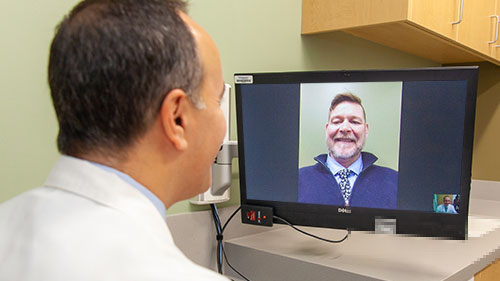
With the rise of digital technology, telemedicine has emerged as a way to provide healthcare services remotely. Telemedicine allows patients to receive medical consultations through virtual communication tools without having to leave their homes. This innovation in healthcare has revolutionized the way we access medical care, making it more convenient, affordable, and efficient. In this article, we will explore the ins and outs of telemedicine, including its benefits, drawbacks, alternatives, and how-tos.
Who Can Benefit From Telemedicine?

Telemedicine is beneficial for both patients and healthcare providers. Patients who live in remote or rural areas can now have access to medical care without traveling long distances. Elderly patients and those with mobility issues can also benefit from telemedicine by receiving care from the comfort of their own homes. Healthcare providers can use telemedicine to provide better care to their patients, increase patient satisfaction, and reduce hospital readmissions.
What Is Telemedicine?

Telemedicine is the use of digital communication tools such as video conferencing, phone calls, and text messaging to provide medical consultations remotely. Telemedicine allows patients to consult with healthcare providers without having to be physically present in the same location. Telemedicine can be used for a wide range of medical conditions and treatments, from routine check-ups to chronic disease management.
When Should You Use Telemedicine?

Telemedicine can be used for a variety of medical situations. It can be used for routine follow-up appointments, prescription refills, and minor illnesses such as colds and flu. Telemedicine can also be used for mental health consultations, dermatology consultations, and chronic disease management. However, there are certain medical conditions that may require an in-person consultation, such as a broken bone or a severe injury.
How to Use Telemedicine?

To use telemedicine, patients need a reliable internet connection and a device with a camera and microphone, such as a smartphone or computer. Patients can schedule a telemedicine appointment with their healthcare provider and receive instructions on how to connect to the virtual platform. During the appointment, patients can discuss their symptoms, medical history, and any concerns they may have with their healthcare provider.
Pros and Cons of Telemedicine
Like any innovation, telemedicine has its pros and cons. Here are some of the benefits and drawbacks of telemedicine:
Pros:
- Convenience: Patients can receive medical care from the comfort of their own homes, without having to travel long distances or take time off work.
- Affordability: Telemedicine can be more cost-effective than in-person consultations, as it reduces overhead costs for healthcare providers.
- Efficiency: Telemedicine can reduce wait times and improve patient access to medical care.
- Accessibility: Telemedicine can provide medical care to patients who live in remote or rural areas, or who have mobility issues.
Cons:
- Technical Difficulties: Telemedicine requires a reliable internet connection and a compatible device, which may not be available to all patients.
- Limited Physical Examination: Telemedicine does not allow for a complete physical examination, which may limit the accuracy of medical diagnoses.
- Limited Treatment Options: Telemedicine may not provide access to all medical treatments and procedures that require in-person consultations.
Alternatives to Telemedicine
While telemedicine has many benefits, there are also alternative options for receiving medical care remotely. Some alternatives to telemedicine include:
- E-mail consultations: Patients can communicate with their healthcare provider via e-mail to discuss medical concerns or receive medical advice.
- Phone consultations: Patients can schedule a phone consultation with their healthcare provider to discuss medical concerns or receive medical advice.
- Online symptom checkers: Patients can use online symptom checkers to receive medical advice based on their symptoms.
Step-by-Step Guide to Using Telemedicine
Here is a step-by-step guide to using telemedicine:
- Choose a healthcare provider who offers telemedicine services.
- Contact the healthcare provider to schedule a telemedicine appointment.
- Confirm that you have a reliable internet connection and a compatible device with a camera and microphone.
- Download any necessary software or applications to connect to the telemedicine platform.
- Join the virtual consultation at the scheduled time.
- Discuss your symptoms, medical history, and concerns with your healthcare provider.
- Follow any treatment recommendations or instructions provided by your healthcare provider.
Telemedicine vs. In-Person Consultations: A Comparison
Here is a comparison of telemedicine and in-person consultations:
| Criteria | Telemedicine | In-Person Consultations |
|---|---|---|
| Convenience | High | Low |
| Cost | Low | High |
| Access | High | Low |
| Physical Examination | Limited | Complete |
| Treatment Options | Limited | Complete |
Tips for Using Telemedicine
Here are some tips for using telemedicine effectively:
- Test your internet connection and device before the appointment to ensure a smooth connection.
- Find a quiet and private location for the appointmentto maintain confidentiality.
- Have your medical history and any relevant documents on hand for the appointment.
- Be prepared to discuss your symptoms, concerns, and any questions you may have with your healthcare provider.
- Follow any treatment recommendations or instructions provided by your healthcare provider.
The Best Telemedicine Services
There are many telemedicine services available today, each with its own unique features and benefits. Here are some of the best telemedicine services:
- Teladoc: Teladoc offers 24/7 access to board-certified physicians, therapists, and other healthcare providers.
- Amwell: Amwell provides access to a wide range of medical specialists, including dermatologists and psychiatrists.
- Doctor on Demand: Doctor on Demand offers video consultations with licensed physicians, psychologists, and other healthcare providers.
- MDLIVE: MDLIVE provides virtual consultations with board-certified physicians, dermatologists, and behavioral health specialists.
- PlushCare: PlushCare offers same-day appointments with experienced physicians, nurse practitioners, and physician assistants.
Conclusion
Telemedicine is a game-changer in the world of healthcare, providing patients with convenient, affordable, and efficient access to medical care. While telemedicine has its pros and cons, it has paved the way for a new era of healthcare that prioritizes patient convenience and accessibility. Whether you live in a remote area, have mobility issues, or simply prefer the comfort of your own home, telemedicine can provide you with the medical care you need.
FAQs After The Conclusion
- Is telemedicine covered by insurance?
- Many insurance providers now cover telemedicine services, but it’s important to check with your specific insurance plan to confirm coverage.
- Can telemedicine be used for emergency situations?
- Telemedicine is not appropriate for emergency situations that require immediate medical attention. In such cases, patients should call 911 or go to the nearest emergency room.
- Is telemedicine as effective as in-person consultations?
- Telemedicine can be just as effective as in-person consultations for many medical conditions and treatments, but it may not be appropriate for all situations.
- How much does telemedicine cost?
- The cost of telemedicine varies depending on the healthcare provider and the specific services offered.
- What equipment do I need for a telemedicine appointment?
- Patients typically need a device with a camera and microphone, such as a smartphone or computer, and a reliable internet connection to participate in a telemedicine appointment.



